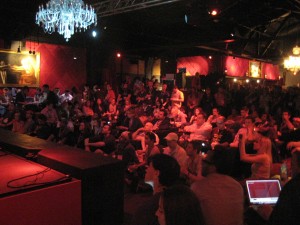Colleague Carol Worthington Levy just wrote a great piece in the LENSER newsletter on the benefits of sending creative employees to conferences such as the DMA’s annual event. I’m a big fan of this and in fact I send my entire creative department, i.e. myself, to an average half-dozen trade shows per year.
But as Carol points out, most creatives don’t go to conferences because the management won’t let them. The suits are afraid of being caught short-handed while the lead designer or writer is out of the office, or maybe they’re just tight fisted. As a result, the few creative events the Direct Marketing Association has tried to put on have languished.
Here are four good reasons copywriters (and designers) should get to go to trade shows:
1. To see how the competition is advertising. In the petri dish of the exhibit hall you can quickly get a cross-section of images and messages your competitors are using to market… and better yet, you can see how the audience reacts by gauging the floor traffic.
2. To see your audience in the wild. I don’t know about you, but when I write I frequently have an imaginary picture of my prospect in my mind. It makes the copywriting task more focused. So what could be better than actually seeing real prospects to add detail to that visualization?
3. To see what hot buttons work for your audience. Hang back when a product demo is going… observe the phrases the demo person is using and how the recipient of the demo reacts. This is a great way to find out what is truly important about a complex product so you can use it effectively in your own selling.
4. To learn something new. I am generally pretty disappointed in the educational sessions at conferences (other than SXSW, and even that had some clinkers this year). But if you look at learning as a nice bonus instead of the focus, you’re OK. You’ll always learn SOMETHING new.
If you’re a laborer in the creative trenches, please pass the above list and Carol’s article along to your management. I’m doing a session at the DMA this October in San Francisco, and I’d rather not be alone in the room.
